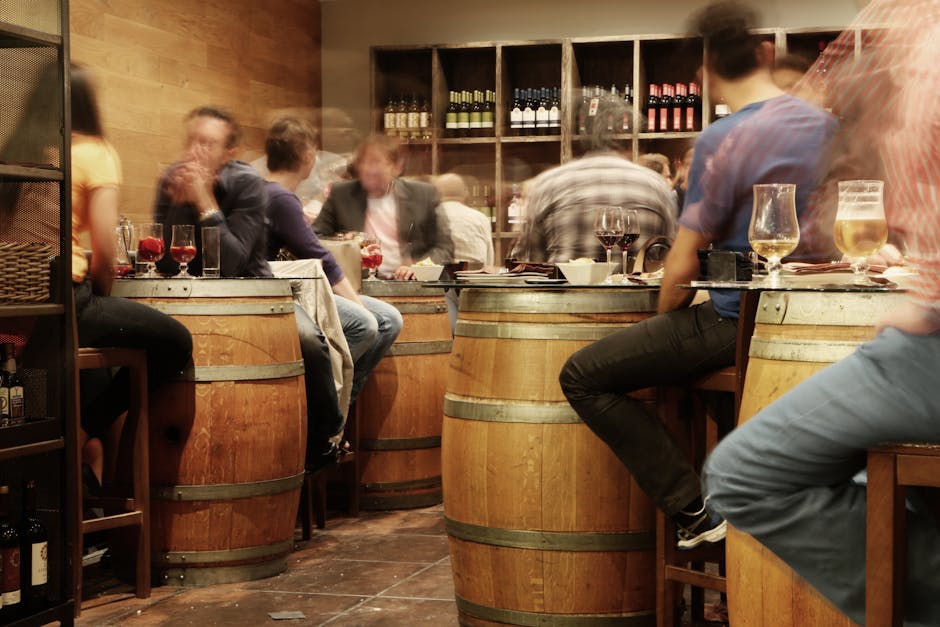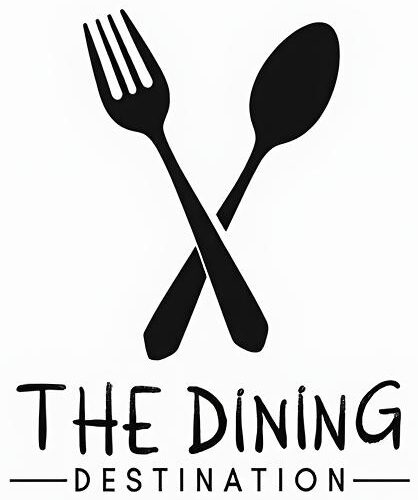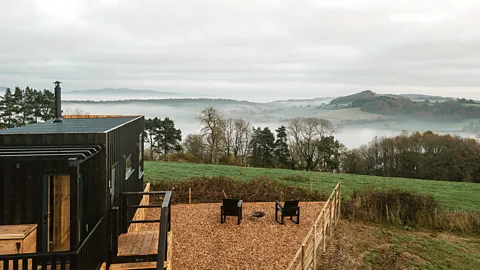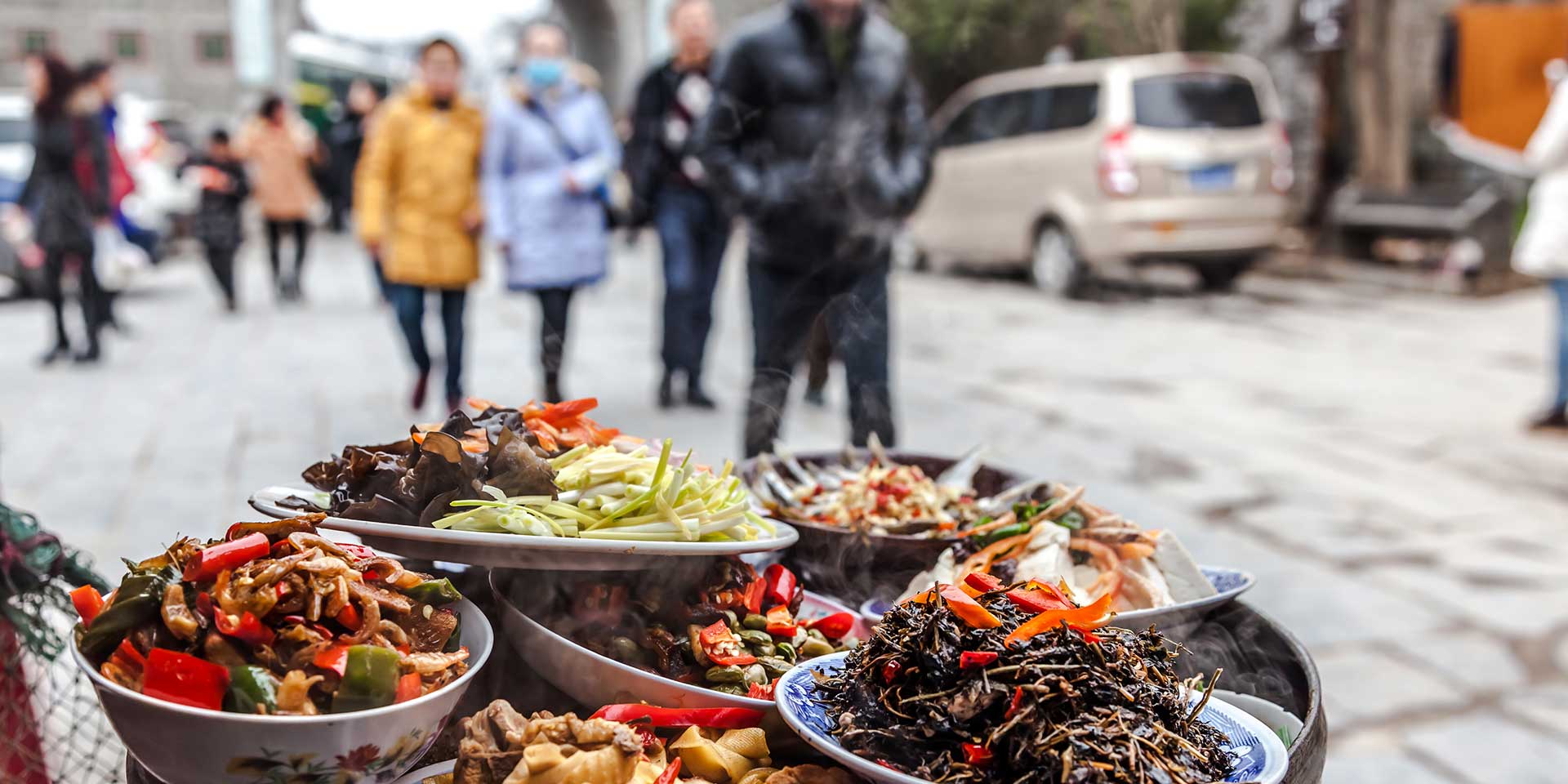Exploring Food Through Local Eyes
Guided food tours are organized culinary experiences led by knowledgeable locals who take small groups to multiple food stops, offering tastings while sharing cultural insights, historical context, and insider knowledge about a destination’s food scene.
Here’s what you need to know about guided food tours:
- Cost: Typically range from $60-$320 per person depending on destination, duration, and inclusions
- Duration: Usually 3-4 hours covering 5-6 food stops
- What’s included: Multiple tastings (equivalent to a full meal), cultural commentary, sometimes transportation between stops
- Group size: Generally small (8-12 people) for a more personalized experience
- Types: Street food walks, market tours, cooking classes, fine dining experiences, specialty tours (wine, coffee, etc.)
- Best for: Solo travelers, food enthusiasts, visitors seeking authentic local experiences
When you arrive in a new city, the fastest way to connect with its culture is through its food. But where do you start? Which restaurants serve authentic dishes rather than tourist traps? What ingredients and cooking techniques define the local cuisine?
This is where guided food tours shine. More than just eating your way through a neighborhood, these experiences offer a multi-sensory immersion into a destination’s culture, history, and daily life.
“Food is nourishment but also a savory gateway to a culture, its people and heritage,” explains one tour operator. This sentiment captures why food tours have grown dramatically in popularity, with over 250 different tours available globally and more than 8,315 positive reviews from participants.
What makes these tours special is their ability to transform a simple meal into a memory. Expert guides—often chefs, food writers, or passionate locals—reveal the stories behind each dish, introduce you to vendors and restaurant owners, and share insights you’d likely miss exploring on your own.
Interestingly, food tours aren’t just for tourists. Research shows more than half of Chicago Food & City Tours’ guests are local residents seeking to deepen their connection with their own city’s culinary landscape.
Whether you’re sampling fried artichokes in Rome’s Trastevere, exploring Bangkok’s floating markets, or learning to make dumplings in a Chinatown kitchen, guided food tours offer a direct path to understanding a place through its flavors.

Basic Guided food tours terms:
– Best culinary experiences
– Best food tourism destinations
Guided Food Tour 101: How It Works & Why It Matters
Remember the last time a certain taste instantly transported you back to a specific moment? That’s the magic guided food tours tap into. These experiences have evolved far beyond simple restaurant visits into rich cultural journeys that engage all your senses.
When you join a food tour, you’re signing up for a walking feast led by passionate locals who know every hidden culinary gem in their neighborhood. These guides—often chefs, food writers, or certified culinary experts—lead intimate groups of 8-12 people through a carefully curated tasting route.
Science actually backs up why these experiences feel so special. Research shows that when storytelling combines with sensory experiences like taste and smell, our brains form stronger, more vivid memories. That’s why you might forget a restaurant’s name years later, but still remember the fascinating story behind that unusual spice blend you tasted while a guide explained its centuries-old origins.
Most tours include 5-6 tasting stops, with your guide providing cultural context that transforms each bite into a deeper understanding of local traditions. You’ll often get behind-the-scenes access that regular diners miss—like watching artisans at work or meeting the families who’ve run these establishments for generations.
Today’s reputable tours also prioritize safety with individual portions, strict hygiene practices, and options for various dietary needs when you notify them in advance.
What Happens From Booking to Last Bite
Your guided food tour trip begins the moment you book. After securing your spot, you’ll receive confirmation details with practical information: where to meet (typically somewhere central and easy to find), how long to expect the tour to last, and what delicious experiences await.
On tour day, you’ll gather with your fellow food triprs for introductions. Your guide will outline the culinary journey ahead before leading you to the first stop, where you’ll immediately notice something special—the warm welcome that comes from the established relationships between guides and vendors.
“The secret to a great tour is pacing,” explains a Chicago-based tour operator. “We strategically arrange tastings so guests don’t fill up too quickly.” This thoughtful progression typically starts with lighter bites before moving to heartier dishes, often saving sweet treats for the grand finale.
By the end of a well-designed tour, you’ll have consumed the equivalent of a full meal or more—definitely no need for dinner reservations afterward!
Between stops, you might stroll through charming neighborhoods like Barcelona’s Gothic Quarter or, for more spread-out destinations, hop into provided transportation. As the tour concludes, guides typically share recommendations for other culinary gems worth exploring on your own, essentially giving you a food roadmap for the rest of your trip.
Guided food tours versus DIY roaming
Wondering if you should book a guided food tour or just explore on your own? Both approaches have their merits, but they offer distinctly different experiences.
The biggest advantage of guided tours is efficiency and insider access. As one traveler put it: “I could have spent days researching and still not found the tiny workshop where we watched mozzarella being hand-pulled by a third-generation cheesemaker.” Your guide has already done the legwork of finding authentic spots where locals actually eat—not tourist traps with mediocre food and inflated prices.
Language barriers disappear with a guide who handles all communication, explaining unfamiliar menu items and ordering protocols. This cultural bridge is especially valuable in markets or street food settings where vendors might not speak English and the ordering etiquette isn’t obvious.
Cultural context lifts every bite on a guided tour. That pastry isn’t just delicious—it’s the result of a specific historical event that shaped the region’s cuisine. This storytelling dimension transforms casual eating into meaningful cultural understanding.
While Street Food Tours typically cost between $60-$320 upfront (depending on location and inclusions), they offer excellent value through variety. Instead of committing to 2-3 full restaurant meals, you’ll sample many different specialties in a single outing, giving you a broader taste of the local cuisine.
Self-guided exploration has its place too. Many travelers find that taking a tour early in their trip provides the confidence and knowledge to venture out independently afterward, armed with recommendations and newfound understanding of the local food scene.
The best approach? Start with a guided experience to get oriented, then use what you’ve learned to continue your culinary trips on your own terms.
Flavor Formats: Main Types of Guided Food Tours Around the Globe
The world of guided food tours has blossomed into a diverse menu of experiences that cater to every palate, budget, and curiosity. Gone are the days when food tourism meant simply hopping between restaurants—today’s culinary trips come in flavors as varied as the destinations themselves.

Guided food tours: Street vs Fine Dining
On the busy streets of cities worldwide, street food tours have become the heartbeat of culinary exploration. These walking feasts typically wind through neighborhoods where locals actually eat, stopping at 5-7 food carts, market stalls, and tiny eateries that rarely make it into guidebooks.
“Street food tours give you the real pulse of a city,” a veteran guide once told me with a knowing smile. “This is where culinary innovation happens before it reaches fancy restaurants, where traditions are preserved through generations, and where you’ll find the most honest expression of local flavors.”
Take the Athens Street Food Tour as a perfect example. Visitors weave through the city’s central market, savoring crispy souvlaki and honey-drenched loukoumades (donuts) while learning how these humble foods connect to Greece’s ancient history and modern identity.
At the opposite end of the spectrum, fine dining tours cater to those with champagne tastes and the budgets to match. These more refined experiences (typically $150-$320) might include behind-the-scenes access at award-winning restaurants, intimate conversations with celebrated chefs, premium wine pairings, and the story behind each carefully plated creation.
In San Sebastián, Spain—a city positively glittering with Michelin stars—gourmet pintxos tours showcase the innovative techniques that have made Basque cuisine a global phenomenon. The magic happens when your guide knows exactly which bar serves the best tortilla española and which chef is reinventing traditional codfish in ways that would make their grandmother both proud and puzzled.
Many travelers find their sweet spot somewhere in the middle—tours that begin among the sensory overload of a local market, progress to street vendors with decades-old recipes, and perhaps finish with something a bit more refined. After all, food culture exists at every price point.
Beyond the Plate: Cooking Classes & Home Hosts
For hands-on travelers who believe in learning by doing, participatory guided food tours offer something more lasting than a full stomach—they provide skills to bring home.
“You eat for a day on a tasting tour, but learn to cook for a lifetime in a class,” as one Barcelona cooking instructor poetically puts it. These immersive experiences typically begin with a guided market expedition where you’ll learn to select the perfect ripeness of tomatoes or recognize quality seafood. Then comes the fun part: rolling up your sleeves to prepare regional specialties under expert guidance.
In Vietnam’s colorful Hoi An, popular cooking tours include scenic boat trips to local markets, instruction in creating the town’s signature cao lầu noodles, and fascinating insights into how Chinese, Japanese and French influences have shaped Vietnamese cuisine over centuries. Participants leave with recipe cards or digital guides, ensuring those flavors can be recreated back home.
Home-hosted meals represent perhaps the most intimate form of culinary tourism. Through platforms like EatWith, travelers can book dining experiences in local homes—breaking bread with families while learning about everyday life and food traditions. While not tours in the traditional sense, these experiences often include neighborhood orientation and rich cultural context alongside home-cooked specialties that rarely appear on restaurant menus.
These participatory formats create deeper connections—both to the cuisine and to the people who cherish it. They transform visitors from passive consumers to active participants in living culinary traditions.
Sip & Stroll: Drinks-Focused Walks
Sometimes the most revealing cultural experiences come in liquid form. Beverage-centric guided food tours have surged in popularity, offering deep dives into the drinks that define regions around the world.
Wine tours range from urban walks through neighborhood enotecas to full-day immersions in storied regions like Bordeaux, Tuscany, or Napa. The most memorable go “from ground to glass,” connecting the specific terroir and production methods to what you’re tasting. You’ll never look at a glass of Chianti the same way after walking the very hills where its grapes are grown.
In apple-rich Normandy, specialized cider and calvados tours take visitors to family-run orchards and distilleries where techniques have been passed down through generations. Guides explain how these distinctively French beverages reflect both the region’s climate and its independent spirit.
Craft beer routes have bubbled up in cities with thriving brewing scenes. In Portland, Oregon, and Asheville, North Carolina, beer-focused walking tours connect visitors with passionate brewmasters who explain the science, art, and revolution behind American craft brewing—often with generous samples to illustrate each point.
Perhaps the most culturally illuminating are coffee tours in producing regions like Colombia, Ethiopia, and Costa Rica. Visitors follow the journey from seed to cup, learning about cultivation, processing, and the profound economic importance of coffee to local communities—all while developing a deeper appreciation for their morning brew.
For a uniquely spirited cultural immersion, Dublin’s Musical Pub Crawl guides visitors through traditional Irish pubs while local musicians perform and explain the intertwined history of Irish music and pub culture—proving that drinks tours nourish the soul as well as the palate.
Whether you’re a street food enthusiast, an aspiring chef, or a beverage connoisseur, today’s guided food tours offer a flavor format perfectly suited to your tastes. The best of them transform mere eating into understanding, and tourists into temporary locals.
Budget, Inclusions & Picking a Reputable Tour
Wondering what you’ll actually pay for a guided food tour? Let’s break down the dollars and sense behind these culinary trips that connect you with local flavors and stories.

Most tours fall somewhere between $60 for a straightforward street food walk to $320 for a premium experience with all the trimmings. This wide range isn’t random – it reflects several thoughtful factors that shape your experience.
Your destination plays a huge role in pricing. A dumpling tour through Tokyo’s hidden alleys naturally costs more than exploring an up-and-coming food scene in a smaller city. Duration matters too – most tours run 3-4 hours, but full-day experiences that take you from morning market to evening feast will command higher prices.
What’s actually included in that price tag? Typically, you’ll get food tastings equivalent to a full meal (sometimes more!), though how that’s structured varies widely. Some tours offer small bites at many stops – perfect for sampling a wide variety – while others feature fewer locations with heartier portions that really let you sink your teeth into local specialties.
Transportation, alcoholic beverage pairings, and hands-on cooking components all add to the base price. And don’t forget group size – those intimate six-person tours with personalized attention naturally cost more per person than larger groups.
“You’re not just paying for food,” explains one seasoned guide. “You’re investing in stories, access, and connections that would take days or weeks to find on your own.”

Red Flags & Green Lights When Booking
Not all guided food tours deliver equal value, and spotting the difference beforehand can save both money and disappointment. Here’s your cheat sheet for finding the gems.
Green lights that signal a quality experience include specific food mentions in the tour description. When an operator proudly names actual dishes and specific stops, it shows transparency and thoughtful planning. Small group sizes are another positive indicator – look for tours limited to 8-12 participants for that sweet spot of social connection without the crowd.
The guide’s credentials matter enormously. The best tours feature people with genuine connections to the local food scene – chefs, food writers, or certified guides with deep knowledge. Some even boast World Food Travel Association certification, an industry standard that ensures professional training.
Good operators will ask about dietary restrictions during booking rather than making last-minute scrambles. They’ll also provide detailed itineraries that clarify neighborhoods, walking distance, and accessibility considerations. And of course, consistently positive reviews across platforms like TripAdvisor and specialized food forums speak volumes.
On the flip side, watch for red flags like vague descriptions that simply promise to “sample local food” without specifics. This often indicates limited planning or, worse, a generic experience. Be wary of tours accepting 20+ participants – these crowd scenes typically mean less personal attention and rushed experiences at each stop.
“You wouldn’t hire an actor or amateur food enthusiast to cater your event, why would you hire them to lead a food tour?” asks one Chicago operator, highlighting perhaps the most important consideration of all – guide expertise.
Also proceed with caution if a tour emphasizes shopping opportunities over actual eating, or if the listing mentions many “optional” add-ons that could significantly increase the final cost.
Money Matters: What You Really Pay For
Understanding the economics behind guided food tours helps you evaluate their true value. Surprisingly, the actual food typically represents just 30-40% of the tour price. Your payment covers a complex ecosystem:
The guide’s compensation reflects their specialized knowledge and skills – the best guides aren’t just friendly faces but walking encyclopedias of food history, preparation techniques, and cultural context. Behind the scenes, considerable research goes into building and maintaining relationships with quality vendors who consistently deliver authentic experiences.
Digital marketing and booking platforms take their cut too, often 25-30% commission. If transportation is involved, those vehicle costs factor in. And like any business, there are administrative expenses – insurance, permits, and operational necessities.
What about tipping? While practices vary globally, in North America a 15-20% tip for your guide is customary. European expectations tend to be lower, though still appreciated. Some all-inclusive tours build gratuities into the price – it’s worth checking the details when booking to avoid awkward moments.
The true value transcends the direct cost of the food itself. As one happy participant shared, “I could have found cheaper meals on my own, but I would have missed the stories, the hidden spots, and the cultural context that made each bite meaningful.” That change from mere eating to understanding – that’s the real magic your tour fee purchases.
Maximizing Your Experience: Benefits, Drawbacks & Smart Tips
Taking a guided food tour is like having a friend with insider knowledge show you around their hometown. There’s something magical about diving into a city’s food scene with someone who knows all the hidden gems and stories behind each dish.
When you join a food tour, you’re signing up for more than just a meal. You’re getting a cultural passport that opens doors to authentic local experiences. I’ve seen shy travelers blossom during these tours, chatting with vendors they’d never approach on their own and tasting dishes they couldn’t identify from a menu.
The beauty of these experiences lies in their efficiency—you can sample five or six local specialties in a single afternoon instead of spending days hunting them down. Plus, your guide has already done the hard work of vetting each stop to ensure you’re getting the real deal, not tourist traps.
“I was hesitant about spending the money,” one traveler told me, “but by the end of the tour, I had a mental map of the city through its food that I used for the rest of my trip.”
That said, food tours aren’t perfect for everyone. Some move at a brisk pace to cover multiple stops, which might feel rushed if you prefer to linger. And while most tours create a friendly atmosphere, your experience can be influenced by the group dynamic—that chatty couple from Australia might improve your tour or distract from it.
For those with dietary needs, most companies can accommodate vegetarians with advance notice. Other restrictions like gluten-free, vegan, or specific allergies vary widely by company and destination—always reach out before booking rather than assuming.
Families should look specifically for kid-friendly options. The best family tours often include interactive elements like making your own pizza or rolling spring rolls, keeping younger travelers engaged between tastings.
Getting the Most from Guided Food Tours
The difference between a good tour and a great one often comes down to how you approach it. Here are my tried-and-true tips for making the most of your guided food tour experience:
Arrive hungry but not starving. A light breakfast before a morning tour keeps you comfortable without filling you up. Wear your most comfortable walking shoes—you’ll be on your feet for hours. And dress in layers; food markets can be warmer than the street temperature.
Bring water, especially in warm climates, and a small amount of cash for tips or purchases that catch your eye. A pocket notebook or phone notes app helps you remember favorite spots to revisit later.
During the tour, be curious! Your guide likely knows far more than what’s in their script. Ask about their personal favorites or how the neighborhood has changed. These questions often lead to the most memorable insights.
Don’t feel obligated to finish every bite—pacing yourself ensures you’ll enjoy the final stops as much as the first. And while it might feel uncomfortable, try everything offered, even items outside your usual preferences. The worst outcome is a funny story; the best is finding a new favorite food.
After your tour, put your new knowledge to work. Return to your favorite stops for a full meal, or use what you’ve learned about local ingredients when ordering at other restaurants. Your guide has essentially given you a crash course in local food literacy—use it!
For more insights on food tourism etiquette around the world, our guide on how food tourism is changing the way we travel offers additional tips for culturally sensitive culinary exploration.
Guided food tours as Cultural Bridges
Food has always been the great connector. When language barriers exist, a shared meal creates understanding where words fail.
“I’ve watched complete strangers become friends over a plate of dumplings,” a Shanghai tour guide told me. “Food creates a level of intimacy that’s hard to achieve any other way.”
This is the deeper value of guided food tours—they’re cultural bridges disguised as delicious trips. When you learn why a particular spice blend became important to a culture or how a cooking technique evolved during times of hardship, you gain insights no museum could provide.
These tours support local communities in meaningful ways. The family running that tiny empanada shop might depend on tour groups for steady income. The grandmother still making hand-pulled noodles keeps traditional techniques alive because tourists value authenticity. Your participation becomes a form of preservation.
I’ll never forget watching an elderly vendor in Mexico City light up as our guide explained the historical significance of her mole recipe to our group. The pride in her eyes as she saw foreigners appreciating her culinary heritage was palpable.
This cultural exchange works both ways. Local guides often mention how sharing their food traditions helps combat stereotypes about their culture. Food humanizes places that might otherwise remain abstract or misunderstood in visitors’ minds.
For those interested in tours specifically designed to create these meaningful connections, check out our guide to Culinary Tour Companies that prioritize community impact alongside culinary excellence.
World Hotspots: Destinations Famous for Guided Food Tours
Certain cities have earned stellar reputations as food tour meccas, where culinary traditions, innovative food scenes, and well-organized tour infrastructures create unforgettable experiences for flavor hunters.

Planning Your Guided Food Tours in These Cities
The Mediterranean region offers some of the world’s most enticing guided food tours. In Athens, knowledgeable guides lead small groups through the busy central market, where the aromas of fresh spices, briny olives, and sizzling souvlaki create a sensory overload. The experience connects you directly to Greece’s 4,000-year culinary heritage while sampling contemporary favorites.
Barcelona invites you to find Catalan cuisine beyond the tourist traps. Wander through El Born’s narrow medieval streets, popping into family-run tapas bars where locals gather, or join hands-on paella cooking classes where you’ll learn the secrets of achieving that perfect socarrat (crispy bottom layer). The city’s food scene balances tradition and innovation beautifully.
Straddling two continents, Istanbul offers truly unique guided food tours that trace the Ottoman Empire’s culinary influence. One moment you’re sampling delicate börek pastries in Europe, the next you’re crossing the Bosphorus to taste Asian-side specialties like creamy kaymak with honey. The contrast creates an unforgettable food narrative.
Lisbon’s steep, cobblestoned Alfama district rewards food explorers with Portugal’s seafaring culinary history. Tours typically include the transcendent pastéis de nata (custard tarts), but also dive deeper into bacalhau (salt cod) preparations and ginjinha cherry liqueur served in chocolate cups. The melancholic fado music often provides a soundtrack to these tastings.
In Naples, pizza isn’t just food—it’s religion. Tours here often focus on the strict traditions governing authentic Neapolitan pizza-making (now UNESCO-recognized), but also venture into seafood specialties, street foods like frittatina (fried pasta), and the city’s coffee culture with its unique traditions.
Asia offers equally compelling food tour destinations. Tokyo’s labyrinthine food scene becomes navigable with expert guides who can explain the etiquette of dining at standing sushi counters, introduce you to ramen masters in hidden alleys, or help you select produce at Tsukiji’s outer market. The attention to detail in Japanese cuisine makes guided experiences particularly valuable here.
Shanghai presents a fascinating contrast between traditional dumpling houses where techniques haven’t changed for centuries and cutting-edge fusion restaurants. Tours often include both worlds, along with street foods like sheng jian bao (pan-fried soup dumplings) that locals line up for daily.
The Americas boast their own distinctive food tour scenes. Mexico City’s culinary heritage spans pre-Hispanic ingredients to Spanish colonial influences to contemporary interpretations. Tours might include sampling huitlacoche (corn fungus) tacos at street stands, learning about ancient chocolate preparations, or exploring the vast central market with its regional specialties.
New Orleans offers perhaps America’s most distinctive regional cuisine. Tours trace the city’s unique culinary lineage through gumbo (showcasing African thickening techniques), Creole jambalaya, and French-influenced beignets, often with liberal dashes of hot sauce and fascinating tales of the city’s resilience.
Queens, NY might surprise some travelers, but this borough offers what many consider the world’s most diverse food scene. Tours here might start with Himalayan momos in Jackson Heights, continue to Greek specialties in Astoria, and finish with Latin American treats in Corona—all accessible via a single subway line.
For comprehensive guides to each of these mouth-watering destinations, visit our Best Food Tourism Destinations resource.
Emerging Gems & Alternatives
While established food capitals draw the crowds, savvy culinary travelers are increasingly finding emerging guided food tour destinations with fewer tourists and fresh perspectives.
Boerne, Texas might not be on most international food maps, but Hill Country Food Tours showcases fascinating Texas-German fusion cuisine that tells the story of 19th-century immigration patterns through smoked meats, local wines, and distinctive pastries.
Australia’s northern frontier city of Darwin offers wildly unique food tours featuring Aboriginal bush foods like kakadu plum (the world’s highest vitamin C content) alongside multicultural influences from nearby Southeast Asia—all against the backdrop of colorful tropical markets.
Tbilisi, Georgia has rocketed onto food travelers’ radars with its 8,000-year-old wine traditions (the world’s oldest) and distinctive cuisine featuring khachapuri cheese bread, walnut-based sauces, and dumplings called khinkali that require specific eating techniques best learned from locals.
For travelers who prefer more flexibility, several alternatives to traditional guided food tours exist:
Food passes in cities like Copenhagen let you sample multiple vendors at your own pace. Audio-guided tours through apps like VoiceMap provide expert commentary without the group experience. Detailed market maps highlight recommended stalls for self-guided exploration. And seasonal food festivals often concentrate multiple vendors in one convenient location—perfect for maximizing tastings in limited time.
These alternatives work beautifully for travelers with specific dietary needs requiring maximum flexibility or those who simply prefer setting their own pace while still benefiting from expert curation.
For more global culinary exploration ideas spanning six continents, check out our comprehensive guide to Global Culinary Tours with detailed itineraries and insider recommendations.
Frequently Asked Questions about Guided Food Tours
How long does a typical tour last?
Most guided food tours run between 3-4 hours, though you’ll find plenty of variation depending on what kind of culinary trip you’re seeking.
The classic walking food tour typically lasts around 3-3.5 hours with 5-6 carefully selected stops. This gives you enough time to savor each tasting without feeling rushed, while your guide shares stories between bites. If you’re joining a market tour with a cooking class, expect to spend 4-5 hours as you’ll be shopping for ingredients and then preparing dishes together.
For the truly dedicated food explorer, full-day culinary excursions can stretch to 6-8 hours, especially when venturing beyond city centers to visit farms, vineyards, or producers. These longer experiences often include transportation and more substantial meals.
Evening experiences tend to be a bit shorter, with tapas crawls and cocktail tours typically wrapping up in 2-3 hours—perfect for night owls who still want to make dinner reservations afterward.
Don’t worry about the pacing—good guides build in natural breaks between tastings and ensure comfortable walking distances between stops. As one tour participant put it, “I was surprised at how relaxed it felt. We never rushed through any tasting, but somehow we covered so much ground.”
If you’re pressed for time, look for “highlights” tours that pack the essential flavors into a condensed 2-2.5 hour experience.
Are tours suitable for vegetarians, vegans, or allergies?
When it comes to dietary needs on guided food tours, the landscape varies widely but is becoming increasingly accommodating.
Vegetarians have the easiest time, with most tour companies able to provide meat-free alternatives at nearly every stop when notified in advance. This is the most commonly accommodated restriction, with some operators reporting that 20-30% of their guests request vegetarian options.
Vegan travelers will find their experiences vary dramatically by destination. Cities like Berlin, Portland, and Tel Aviv offer vegan-friendly or even dedicated vegan food tours. Meanwhile, in meat-centric food cultures like Argentina or parts of Eastern Europe, options may be more limited. One tour operator in Barcelona noted, “We’re seeing more vegan requests every year, and we’ve developed relationships with vendors who can provide delicious plant-based versions of traditional dishes.”
Gluten-free needs can often be accommodated with advance notice. Interestingly, even pasta-loving Italy has become quite adept at providing gluten-free alternatives due to increased celiac awareness.
Severe allergies present the biggest challenge for tour operators. Many small food vendors can’t guarantee against cross-contamination, and some companies may decline participants with life-threatening allergies due to safety concerns.
The golden rule? Communicate early and clearly about your dietary needs when booking. Most companies will happily explain exactly what can be accommodated at each stop, and some even offer specialized tours catering to specific dietary requirements.
What should I tip my guide?
Tipping your guided food tour leader follows different customs around the world, and understanding local expectations helps avoid awkward moments.
In North America, plan to tip 15-20% of your tour price for excellent service. This reflects the service-oriented culture where guides often rely significantly on tips as part of their income.
Throughout most of Europe, tipping is more modest but still appreciated—10-15% is considered generous and appropriate for a guide who’s gone above and beyond.
Asian countries have widely varying practices. In Japan, tipping can actually be considered offensive, while in Thailand, a 10% gratuity is warmly welcomed. Your pre-tour information should include guidance specific to your destination.
In Australia and New Zealand, tipping isn’t generally expected, but 10% for exceptional service is always appreciated.
Some luxury or all-inclusive tours build gratuities into their pricing—check your confirmation materials to see if tips are already covered. If your tour involves multiple service providers (like a driver plus guide), it’s worth asking if tips should be given separately.
Cash in local currency is always preferred for tipping. One thoughtful traveler shared, “I make sure to get small bills before the tour starts so I can tip easily without the awkwardness of asking for change.”
Beyond financial gratuities, online reviews can be incredibly valuable to guides. A detailed, positive review helps them attract future clients and can be just as meaningful as a monetary tip.
Conclusion & Next Bite
The humble food tour has evolved into something truly magical in today’s travel landscape. Guided food tours aren’t just about satisfying hunger—they’ve become essential gateways to understanding the soul of a destination.
Throughout this guide, we’ve wandered through steaming street food stalls in Bangkok, sipped wine in ancient Porto cellars, rolled pasta with nonnas in Bologna, and finded hidden gems in the neighborhoods of Paris. Each of these experiences offers something that traditional sightseeing simply cannot—a direct connection to local culture through all five senses.
What makes these culinary trips so special is their ability to transform a simple meal into a meaningful memory. When you taste a dish while hearing the story of how it evolved through centuries of tradition, innovation, or necessity, you’re not just eating—you’re understanding.
When travel can sometimes feel increasingly homogenized, guided food tours stand out by offering something genuinely authentic. They take you beyond tourist districts into the neighborhoods where locals actually eat, introduce you to the families who’ve been making the same recipes for generations, and help you steer unfamiliar ingredients with confidence.
The beauty of these experiences is their accessibility. Whether you’re traveling solo and seeking connection, celebrating a special occasion with a loved one, or introducing children to new flavors in a supportive environment, there’s a food tour perfectly suited to your needs. From budget-friendly street food walks to exclusive chef-led experiences, the options are as varied as the cuisines they showcase.
At The Dining Destination, we’re passionate about the power of food to create meaningful travel experiences. We believe that culinary tourism represents one of the most sustainable and beneficial forms of travel—supporting local producers, preserving food traditions at risk of disappearing, and creating genuine cross-cultural understanding one bite at a time.
As you plan your next trip, we invite you to explore our detailed city guides and restaurant finds. Consider making a guided food tour one of your first activities in a new destination—it will not only fill your stomach but also provide the context and confidence to continue exploring independently.
The most precious souvenirs often can’t be packed in a suitcase. The recipes you learn, the flavors you find, and the stories you hear will travel home with you, changing your own kitchen long after your journey ends.
The world’s table awaits, laden with delicious possibilities. All you need to bring is your appetite, your curiosity, and your sense of trip. Your next unforgettable food memory is just a guided food tour away.








2 thoughts on “Taste the City Like a Local: Best Guided Food Tours Around the World”
Pingback: Everything You Need to Know About Thomas Keller - The Dining Destination
Pingback: Pozole 101: A Detailed Guide to This Traditional Mexican Dish - The Dining Destination
Comments are closed.